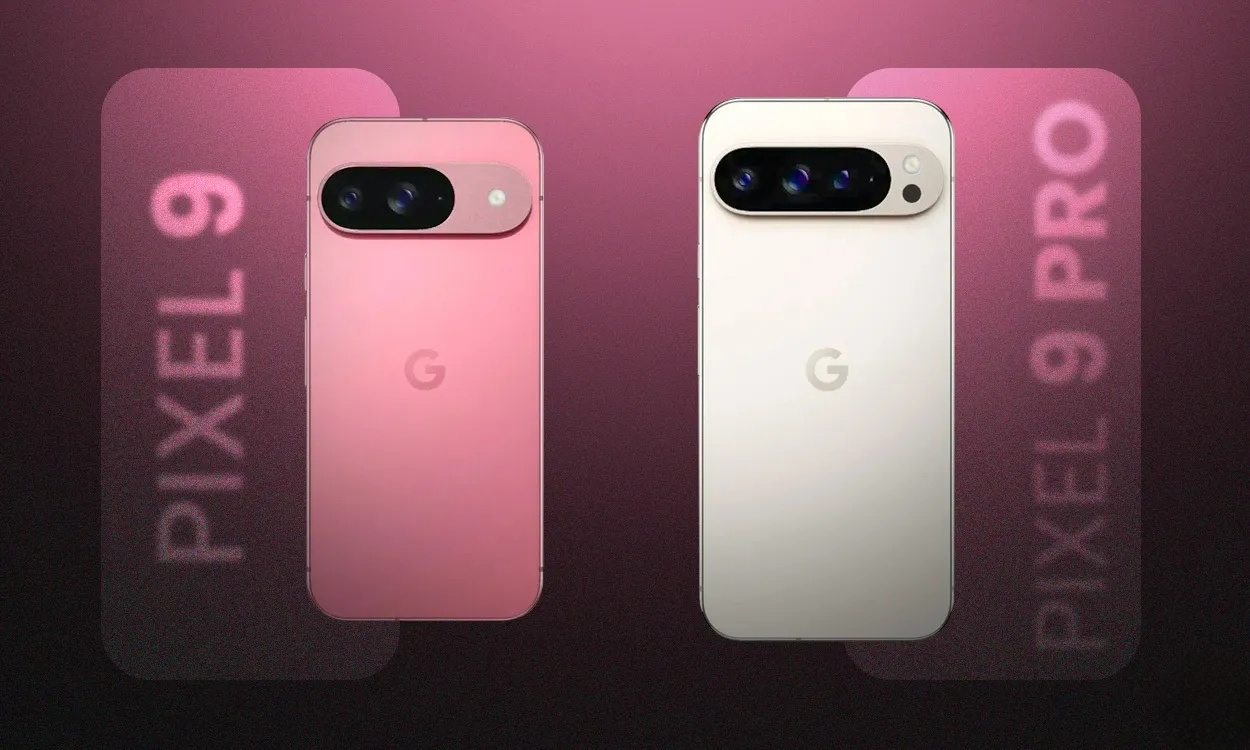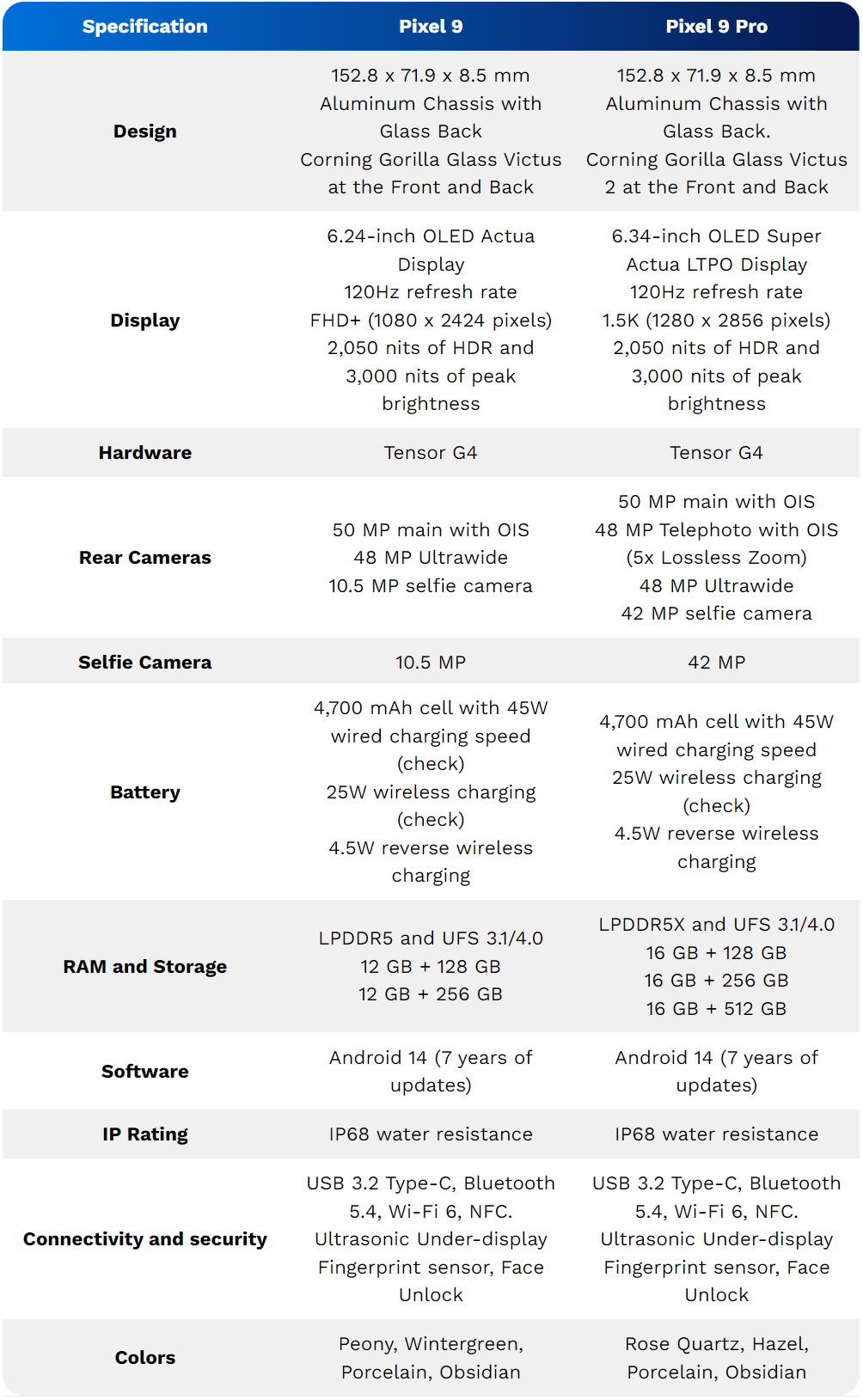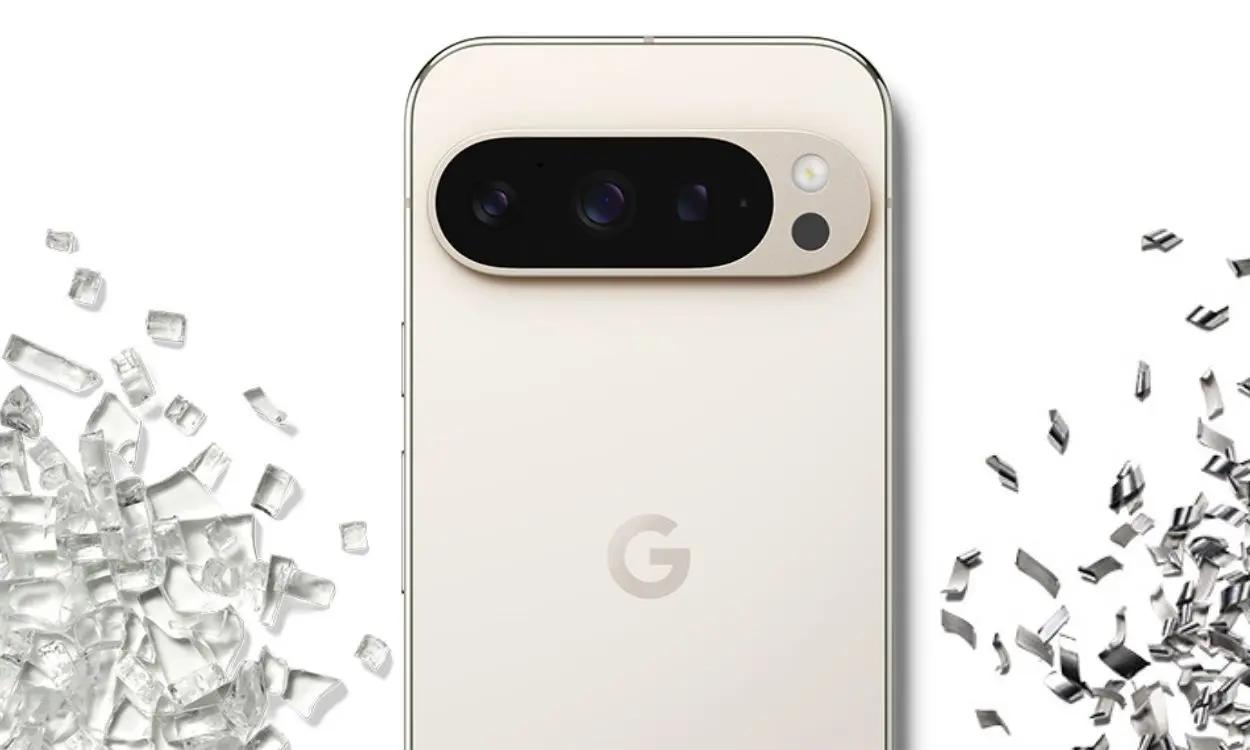
The 2024 Made by Google event was somewhat underwhelming, as the Pixel 9 and Watch 3 series had already been leaked months in advance. However, there’s still much to discuss about the Pixel 9 series, particularly since Google has introduced some new variants. The Pixel 9 Pro now includes an XL version, and the standard Pro model has been made slightly shorter. Much like the annual debate between the vanilla and Pro iPhone models, Google has now sparked its own Pixel 9 vs. Pixel 9 Pro discussion. Here’s everything you need to know to make an informed choice between the Pixel 9 and Pixel 9 Pro.
Specifications Overview

Size and Build
Aside from its features, another reason you might consider the Pixel 9 Pro is its size. Many users have wanted a smaller Pro Pixel, and this desire has been met, but how does the Pixel 9 Pro’s size and build compare to the Pixel 9 or even the Pixel 8?
To start with the basics, both the Pixel 9 and Pixel 9 Pro feature an aluminum chassis and glass backs. The fronts of both devices are protected by Gorilla Glass Victus, with the Pro model using the newer Victus 2. Both models are also IP68-certified for water resistance.

The Pixel 9 Pro has a slightly taller screen than the Pixel 9. While the dimensions of the 9 Pro are similar to the Pixel 9, its display is 0.1 inches larger. The Pixel 8 had a smaller footprint 150.5 x 70.8 x 8.9 mm compared to the Pixel 9 and 9 Pro. However, the 0.2 mm increase in size for the newer models doesn’t significantly impact their pocketability.
In summary, Google has finally responded to consumer feedback with the Pixel 9 Pro. This model should satisfy or at least appeal to fans of smaller phones.
Design and Display
Aside from the size and camera module, the Pixel 9 and Pixel 9 Pro are difficult to tell apart from the front, as their designs are virtually identical. The primary visual differentiation lies at the rear. The Pixel 9 Pro features a triple-camera setup, which includes a third lens that the Pixel 9 lacks. Additionally, the Pixel 9 Pro includes a temperature sensor below the flash, while the standard Pixel 9 centers the flash without this extra sensor.

Material differences further set the two models apart. The Pixel 9 has a glossy back panel paired with a matte frame, while the Pixel 9 Pro reverses this with a matte glass back and a glossy frame. Although it would have been preferable for Google to maintain a consistent matte finish across both models, the current design choices are as they stand. Both models feature volume and power buttons on the right side, a USB-C port on the bottom, and a SIM card tray on the left.
The Pixel 9 features a 6.24-inch OLED display with a 120Hz refresh rate and FHD+ resolution, while the Pixel 9 Pro sports a slightly larger 6.34-inch OLED LTPO panel with a 1.5K resolution and also supports a 120Hz refresh rate. Both screens have a central punch hole for the selfie camera.

Both displays can achieve a peak brightness of 2,050 nits when displaying HDR content, with a maximum brightness of 3,000 nits. The bezels on the Pixel 9 are slightly thicker than those on the Pixel 9 Pro, continuing the trend observed last year with the Pixel 8 and 8 Pro.
Hardware and Software
Both the Pixel 9 and Pixel 9 Pro are equipped with Google’s latest Tensor G4 chipset. This eight-core SoC features a 1+3+4 configuration and is built on Samsung’s 4nm process. Its core specifications are as follows:
- 1 x Cortex-X4 @ 3.1 GHz
- 3 x Cortex-A720 @ 2.6 GHz
- 4 x Cortex-A520 @ 1.95 GHz
The GPU is an ARM Mali-G715, operating at 940 MHz. This is a slight overclock from the Tensor G3’s Mali-G715, which operated at 890 MHz.

On paper, the performance differences between the Pixel 9 and Pixel 9 Pro may not be substantial, with an expected improvement of around 5-10% in overall performance and battery life. This boost isn’t dramatic, and actual performance will also depend on whether Google applies throttling to the SoC for power saving, as seen with the Pixel 8 series. We hope for an improved cooling solution this time around.
While the performance of both models will be similar, the Pixel 9 Pro benefits from faster UFS 4.0 storage, offering better read and write speeds compared to the Pixel 9’s UFS 3.1.
Both the Pixel 9 and Pixel 9 Pro come with Android 14 pre-installed. Google has committed to providing 7 years of major Android updates and feature drops. It’s unusual for a Pixel series launch not to coincide with a new Android version, so the Pixel 9 Pro will be supported alongside the Pixel 8 series until the same time.
Android 15 introduces several new features, including Private Space, App Pairs, and App Archiving. For more details on what Android 15 has to offer, check out our list of its key features.
Cameras
The standard Pixel 9 is equipped with two rear cameras: a 50 MP wide lens with an f/1.7 aperture and OIS, and a 50 MP ultrawide lens without OIS. In contrast, the Pixel 9 Pro includes an additional 48 MP telephoto lens with 5x optical zoom and OIS. For selfies, the Pixel 9 Pro features a 42 MP front camera, while the Pixel 9 has a 10.5 MP front camera.

Both the Pixel 9 and Pixel 9 Pro use the Samsung GNK 50 MP sensor for their primary camera, and both feature a Sony IMX858 sensor for the ultrawide lens. With Google’s advanced computational photography algorithms and the upgraded hardware, both devices are set to deliver impressive photo quality. However, the Pixel 9 Pro gains a slight advantage with its additional 48 MP telephoto lens.
Connectivity and Color Variants
Both the Pixel 9 and Pixel 9 Pro feature Bluetooth 5.4, Wi-Fi 6, and a USB 3.2 Type-C port. They also support NFC, an ultrasonic under-display fingerprint sensor, and Face Unlock. Additionally, the Pixel 9 features satellite connectivity and improved cellular reception, thanks to the upgraded Exynos 5400 modem.

Both Pixel 9 models are available in four colors. Both the Pixel 9 and Pixel 9 Pro are available in Porcelain and Obsidian. Additionally, the Pixel 9 comes in Peony and Wintergreen, while the Pixel 9 Pro is offered in Rose Quartz and Hazel.
Pixel 9 vs. Pixel 9 Pro: Is the Upgrade Worth It?
This year, the starting prices for the base variants of the Pixel series have increased by $100.The Pixel 9 starts at $799 for the 128GB model, while the Pixel 9 Pro begins at $999. The Pro version offers several enhancements, including a Telephoto lens, a sharper display, more RAM (16 GB compared to 12 GB on the standard model), and a more compact design.
Additionally, the Pixel 9 Pro includes a year’s worth of Gemini Advanced features at no extra cost. Despite these perks, the Pixel 9 still provides better value for money.
If you prioritize the Telephoto camera, a slightly larger and sharper screen, and prefer the Pro’s design elements like its matte back glass, the Pixel 9 Pro is worth considering.

0 Comments